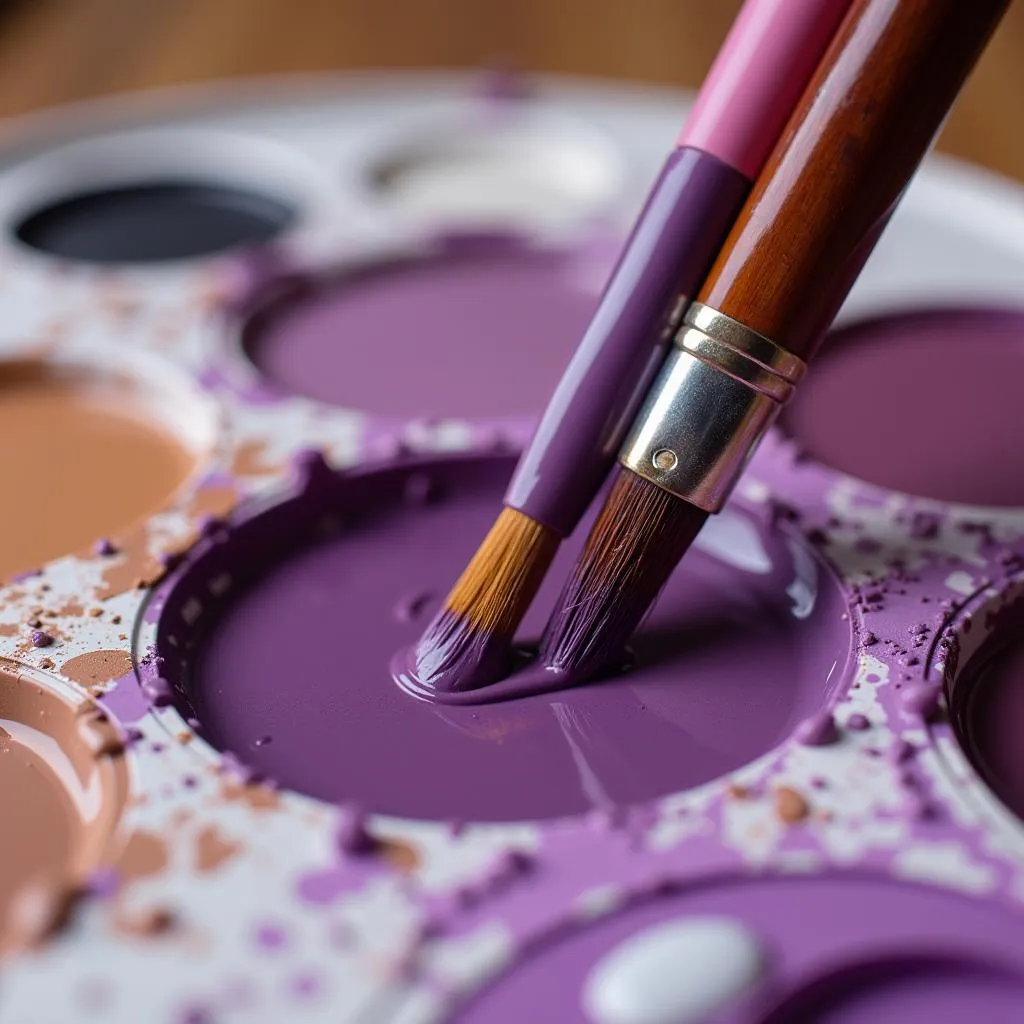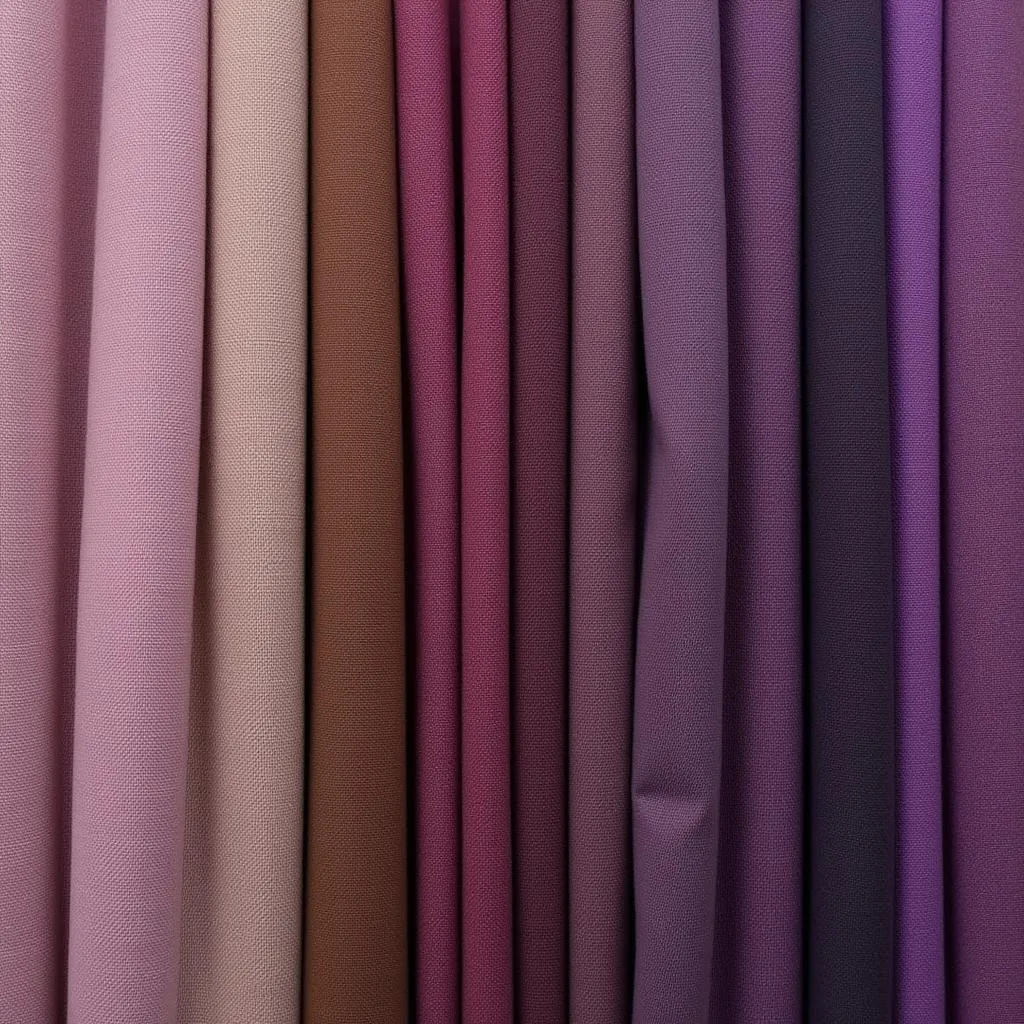When it comes to the world of colors, the possibilities for mixing and matching are truly endless. One intriguing combination that often sparks curiosity is the mixture of purple and brown. What happens when these two distinct hues collide? Let’s delve into the realm of color theory and explore the captivating results of blending purple and brown.
Understanding the Color Wheel
To understand the outcome of mixing purple and brown, we must first grasp the fundamentals of the color wheel. The color wheel is a visual representation of colors arranged according to their relationships. Primary colors (red, yellow, and blue) form the foundation, and by mixing them, we create secondary colors (orange, green, and purple).
Purple, a secondary color, is created by mixing red and blue. Brown, on the other hand, is not a primary or secondary color but rather a tertiary color. It is typically achieved by mixing all three primary colors or by combining complementary colors (colors opposite each other on the color wheel) such as orange and blue.
The Magic of Mixing Purple and Brown
When purple and brown are combined, they create a range of rich and earthy tones. The specific hue you achieve depends on the proportions of each color used and the undertones present.
- Purple Dominance: If you use more purple than brown, the resulting color will be a muted or dusty purple with warm undertones. This shade can evoke a sense of sophistication and mystery.
 Purple and brown paint being mixed together
Purple and brown paint being mixed together
-
Brown Dominance: Conversely, if brown is the dominant color, the mixture will yield a deep, chocolatey brown with subtle hints of purple. This shade can create a grounding and cozy atmosphere.
-
Equal Proportions: When purple and brown are mixed in equal amounts, they create a balanced and nuanced shade that often appears as a deep maroon or burgundy. These colors are often associated with richness, elegance, and royalty.
Exploring Variations: The Role of Undertones
The undertones of both the purple and brown you choose will also play a significant role in the final color. For instance, a cool-toned purple with blue undertones mixed with a warm brown with red undertones will result in a slightly different shade than a warm-toned purple with red undertones mixed with a cool brown with yellow undertones.
 Fabric swatches in various shades of purple and brown
Fabric swatches in various shades of purple and brown
To better understand the impact of undertones, consider these examples:
- Blue-Based Purple + Yellow-Based Brown: This combination will create a muted purple with a hint of gray.
- Red-Based Purple + Red-Based Brown: This mixture will result in a warm, almost burgundy hue.
Applications in Design: From Walls to Wardrobes
The versatility of purple and brown makes it a captivating color combination for various design applications. Here are a few ideas to inspire you:
-
Interior Design: Purple and brown can create a luxurious and inviting ambiance in living rooms, bedrooms, and dining areas. Pair deep purple walls with brown leather furniture or incorporate accents of both colors in throw pillows, rugs, and artwork.
-
Fashion: Purple and brown are a timeless and sophisticated pairing in fashion. Consider a deep purple blouse with brown trousers or a brown dress with a purple statement necklace. What color pants go with a purple shirt? Explore different shades and textures to create a stylish and cohesive look.
-
Art and Crafts: The rich and earthy tones of purple and brown are perfect for painting, drawing, and mixed media projects. Experiment with different shades and techniques to create landscapes, portraits, and abstract compositions.
Conclusion
Mixing purple and brown opens up a world of color possibilities, from muted and dusty purples to deep, chocolatey browns. By understanding the color wheel, the role of undertones, and the impact of different proportions, you can confidently blend these two hues to create captivating and unique shades. Whether you’re redecorating your home, putting together an outfit, or working on an art project, don’t be afraid to embrace the beautiful harmony of purple and brown.
FAQ
1. Can I mix purple and brown paint to create a neutral color?
While purple and brown are not typically considered neutral colors, they can be combined to create muted and earthy tones that can function as neutrals in certain design schemes. Experiment with different proportions to achieve the desired level of neutrality.
2. What other colors go well with purple and brown?
Purple and brown pair well with a variety of colors, including:
- Cream
- Gray
- Gold
- Green
- Teal
- Orange
3. What is the best way to lighten a purple and brown mixture?
To lighten a purple and brown mixture, gradually add small amounts of white or a lighter shade of brown until you achieve the desired lightness.
 A color chart displaying different shades of purple and brown
A color chart displaying different shades of purple and brown
4. Can I use purple and brown in a minimalist design scheme?
Yes, purple and brown can be incorporated into a minimalist design scheme by using them sparingly and opting for muted or darker shades.
5. What is the symbolic meaning of the color combination of purple and brown?
Purple is often associated with royalty, luxury, and spirituality, while brown represents stability, grounding, and nature. When combined, these colors can evoke a sense of elegance, sophistication, and connection to the earth.
Need More Inspiration?
Looking for more color combinations? Check out our articles on what is the color of rain and what colors make hot pink. For color matching tips, don’t miss our guide on what colors go with orange clothes.
Let Color Box Hanoi Be Your Color Guide
If you’re looking to explore the world of color and create a space that reflects your unique style, Color Box Hanoi is here to help. Our team of color experts can provide personalized consultations, color matching services, and high-quality paints to bring your vision to life. Contact us at Phone Number: 0373298888, Email: [email protected] or visit our showroom at 86 Cau Giay, Hanoi. We offer 24/7 customer support.
